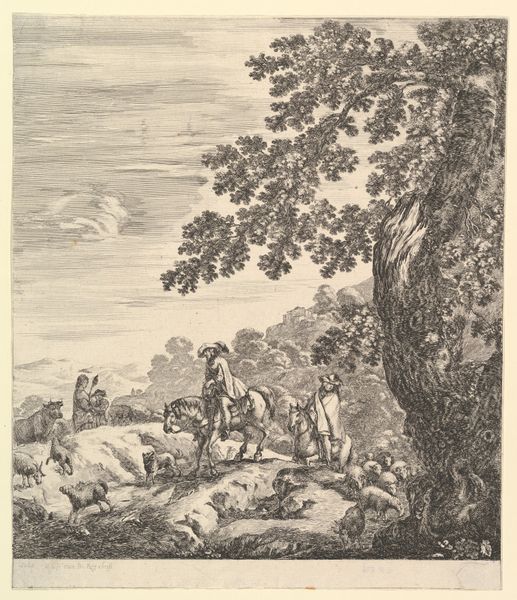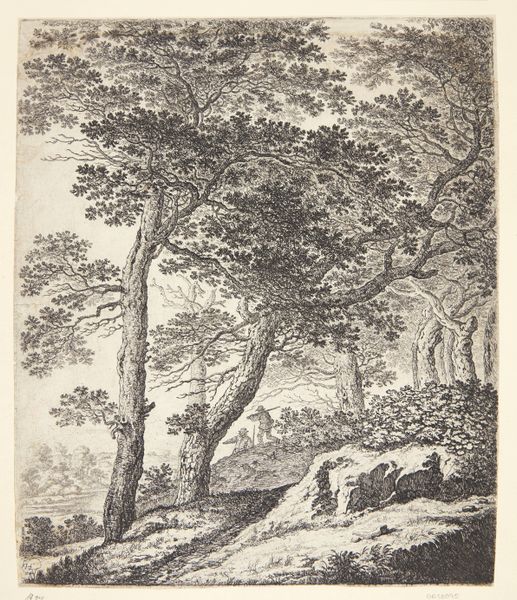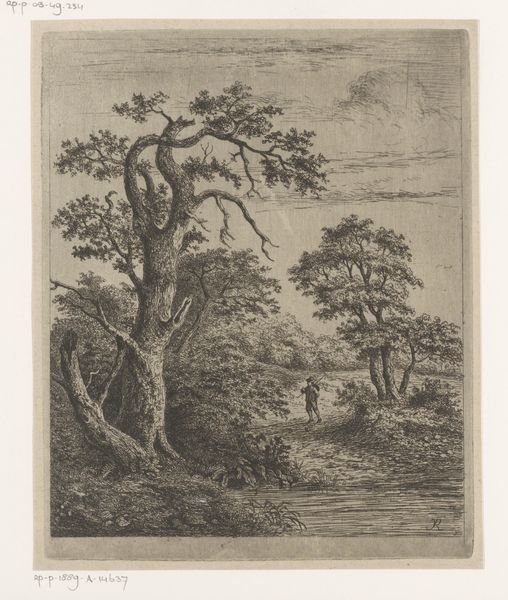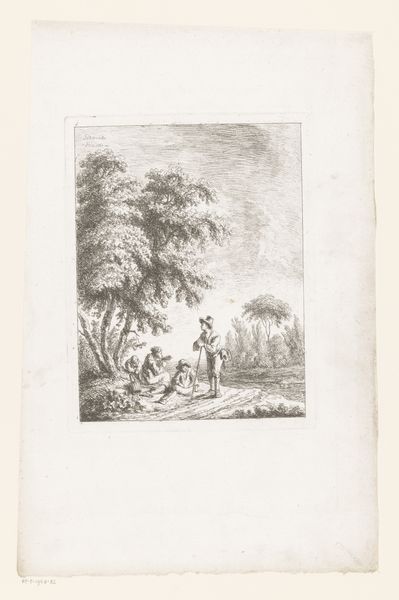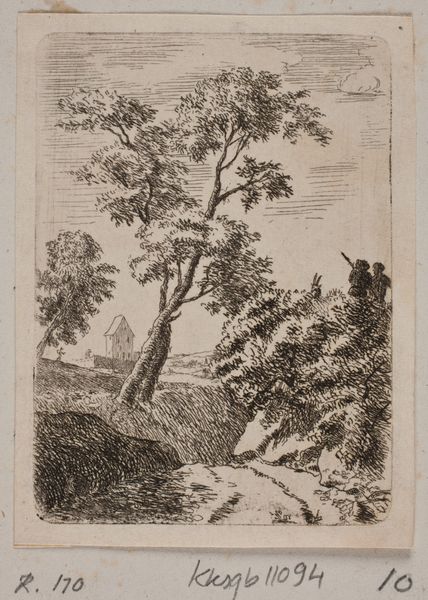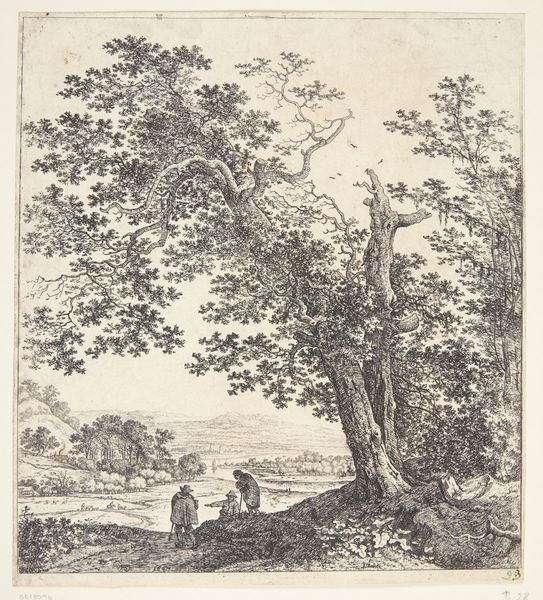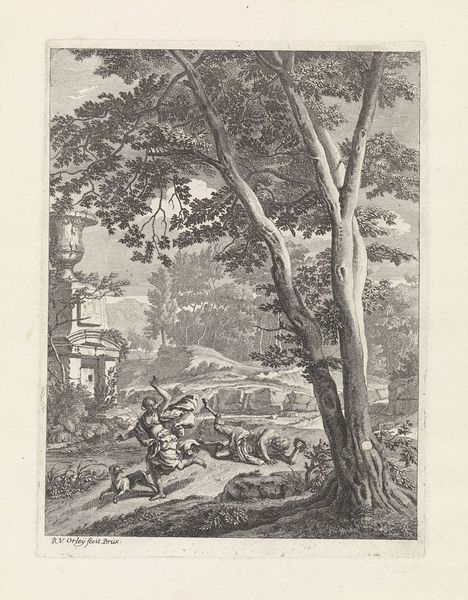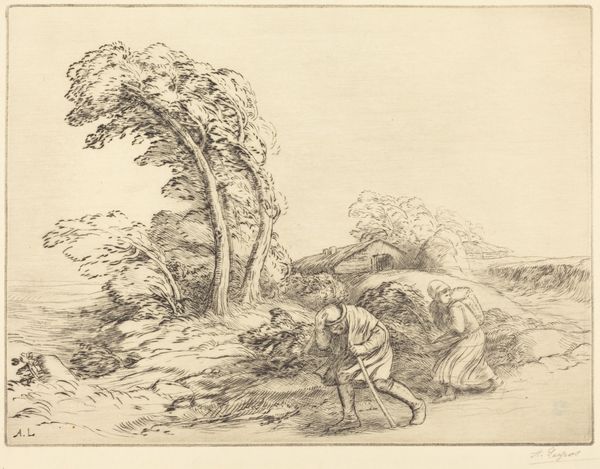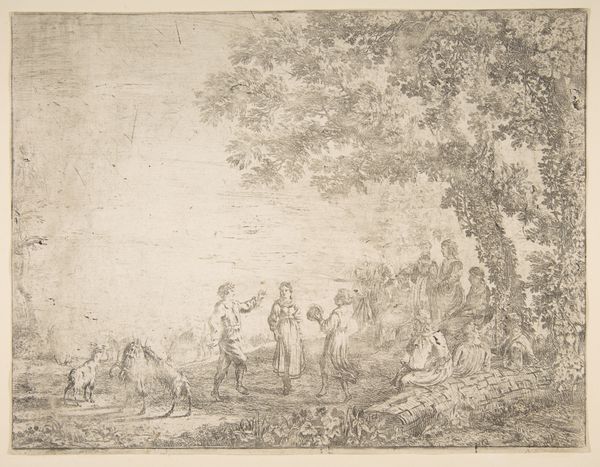
print, etching, engraving
#
narrative-art
# print
#
etching
#
landscape
#
etching
#
engraving
Dimensions: 55 mm (height) x 75 mm (width) (plademaal)
This is B. Flügge's "En Bjergegn", an etching from around the 17th or 18th century, now at the SMK. The artwork is dominated by densely etched lines that create a textured landscape. Look at how the artist uses line work to define form and space; from the delicate hatching of the sky to the tangled thicket in the foreground. This creates a rich surface that invites close inspection. The composition directs our gaze from a prominent tree on the left towards figures on a path. Flügge employs contrast, using darker, concentrated lines to give weight to the tree. This draws our eye through the scene. We can read the landscape not merely as a depiction but as a carefully constructed visual field, a structure that suggests an interplay between nature and human presence. This reflects a semiotic system where landscape elements function as signs. The tree, path, and figures communicate cultural ideas about nature and society. In the end, what we are left with is how the interplay of form and content destabilizes our understanding.
Comments
No comments
Be the first to comment and join the conversation on the ultimate creative platform.
